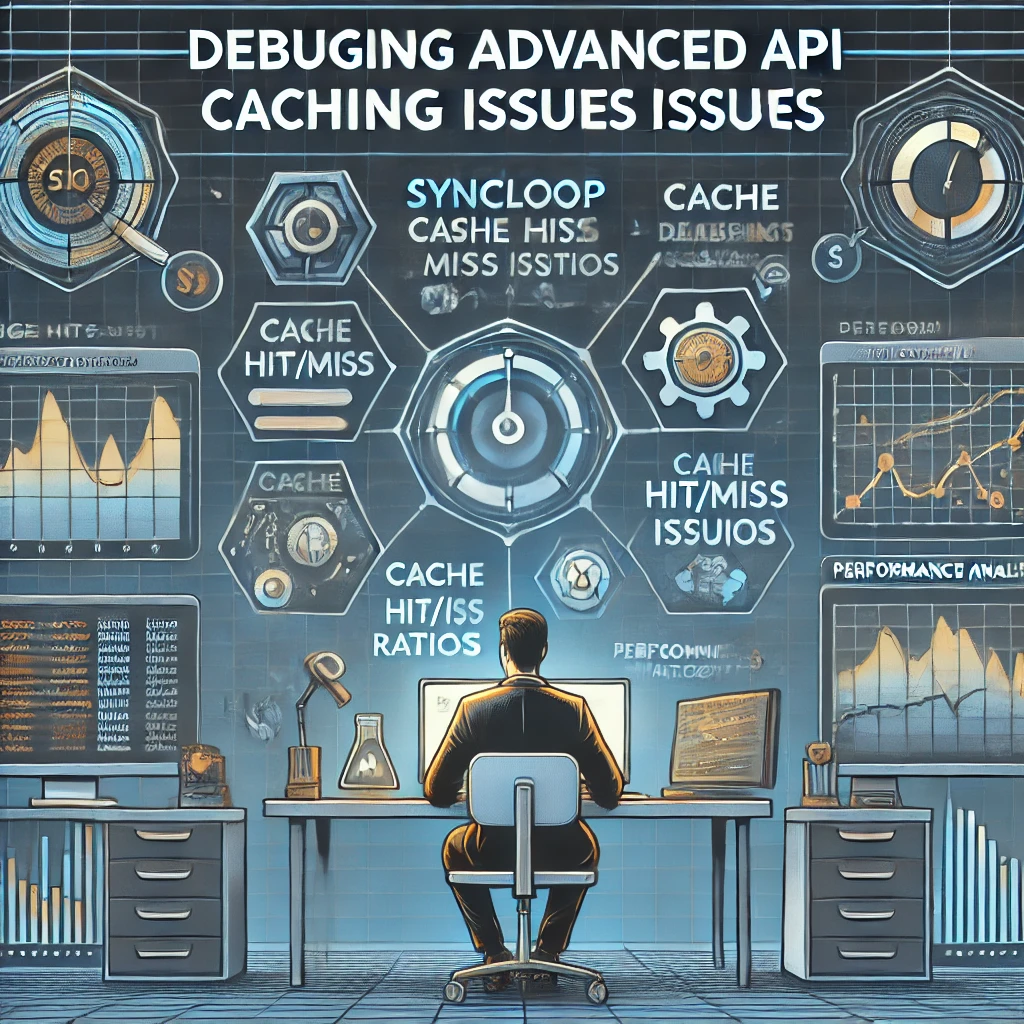Debugging Advanced API Caching Issues in Syncloop

Syncloop simplifies debugging caching issues with tools for monitoring, analysis, and fine-tuning. This blog explores common caching challenges in API systems and demonstrates how Syncloop’s capabilities can help resolve them efficiently.
Common Caching Challenges in APIs
- Stale Data: Cached data becoming outdated, leading to inconsistencies.
- Cache Invalidation Errors: Failure to update or remove cache entries when the underlying data changes.
- Over-Caching: Excessive reliance on caching, which might ignore dynamic or frequently updated data.
- Under-Caching: Inefficient caching strategies resulting in frequent backend requests.
- Distributed Cache Issues: Synchronization problems across multiple cache nodes in a distributed environment.
How Syncloop Simplifies Cache Debugging
1. Real-Time Monitoring
- Use Syncloop’s monitoring dashboards to track cache hit and miss rates, response times, and backend load.
2. Cache Logs and Analytics
- Access detailed logs to understand which requests are cached, when the cache is invalidated, and why certain responses bypass caching.
3. Dynamic Configuration
- Adjust caching policies dynamically without deploying new code, such as setting expiration times or cache bypass rules.
4. Integration with Distributed Caches
- Debug synchronization issues in distributed environments by monitoring data consistency across nodes.
5. Test and Simulate
- Simulate traffic and test caching strategies in Syncloop’s sandbox to validate performance under different scenarios.
6. Cache Key Debugging
- Identify incorrect or inefficient cache key usage that might lead to cache pollution or over-fetching.
Steps to Debug API Caching Issues with Syncloop
Step 1: Analyze Cache Metrics
- Check cache hit/miss rates to identify patterns of under-caching or over-caching.
Step 2: Review Cache Policies
- Validate configurations such as Time-to-Live (TTL), cache scope, and invalidation rules.
Step 3: Monitor Logs
- Examine Syncloop’s detailed cache logs to pinpoint where and why caching fails or misbehaves.
Step 4: Test Cache Keys
- Ensure cache keys are uniquely identifying requests correctly without collisions.
Step 5: Debug Invalidation
- Track cache invalidation events and confirm they align with updates in the underlying data.
Step 6: Optimize Configuration
- Use Syncloop’s tools to adjust caching strategies dynamically and validate performance improvements.
Best Practices for Advanced Caching with Syncloop
- Use Smart Invalidation: Employ cache invalidation policies that trigger updates only when necessary.
- Optimize Cache Scope: Define clear caching scopes, such as user-specific or global, to balance efficiency and accuracy.
- Monitor Continuously: Regularly track cache performance metrics to identify and resolve issues proactively.
- Test Thoroughly: Simulate various traffic patterns to validate caching strategies under different workloads.
- Document Cache Policies: Maintain clear documentation of caching rules and their intended outcomes.
Real-World Applications of Syncloop for Caching Debugging
1. E-Commerce
- Resolve stale product or inventory data issues caused by misconfigured cache policies.
2. IoT Systems
- Debug data inconsistencies in device-to-cloud communications due to distributed cache synchronization problems.
3. Content Delivery Networks (CDNs)
- Optimize caching for media files and API responses to reduce latency for global users.
4. SaaS Applications
- Troubleshoot user-specific cache issues in multi-tenant environments.
Conclusion
Effective caching is key to delivering high-performance APIs, but advanced caching systems can introduce challenges that require precise debugging and optimization. Syncloop provides the tools necessary to identify and resolve these issues efficiently, ensuring optimal API performance.
Whether addressing stale data, synchronization problems, or inefficient caching strategies, Syncloop empowers developers to maintain reliable and responsive APIs. Embrace Syncloop to optimize your caching workflows and enhance user experiences.
A conceptual visualization of Syncloop-powered caching workflows, showcasing real-time monitoring, caching metrics, and debugging processes.
Back to Blogs